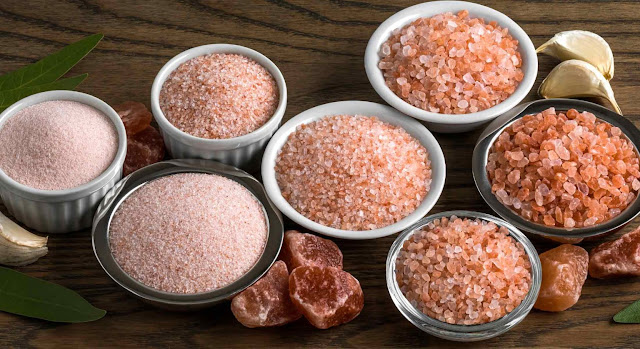Salt Substitutes Market is Estimated to Witness High Growth Owing to Increasing Awareness About Health Concerns
 |
| Salt Substitutes Market |
The global Salt Substitutes Market is estimated to be valued at US$ 1.09 billion in 2021 and is expected to exhibit a CAGR of 5.67% over the forecast period 2022 to 2030, as highlighted in a new report published by Coherent Market Insights.
Market Overview:
The Salt Substitutes Market offers alternative products that
can be used as a replacement for traditional table salt. These substitutes are
gaining popularity due to the increasing awareness about health concerns
associated with high sodium intake. Salt substitutes provide similar taste and
flavor to salt, but with lower sodium content, making them an ideal choice for
individuals following a low-sodium diet. The market for salt substitutes is
driven by the rising prevalence of hypertension, cardiovascular diseases, and
obesity, which has led to increased demand for healthier food options.
Market Key Trends:
One key trend in the Salt Substitutes Market is the growing
demand for natural and organic substitutes. Consumers are becoming more
conscious about their health and are actively seeking products that are free
from artificial ingredients and additives. Natural salt substitutes, such as
herbs, spices, and sea salts, are gaining traction as they offer a more
wholesome and nutritious option compared to synthetic substitutes. These
natural alternatives not only provide flavor enhancement but also offer
additional health benefits, such as antioxidants and minerals. Manufacturers
are focusing on developing innovative and organic salt substitutes to cater to
the growing demand for healthier food options.
Key players in the Salt Substitutes Market include Cargill Inc., Nu-Tek Food
Sciences LLC, Koninklijke DSM N.V., Montana Indusrie Holding A.G., Angel Yeast
Co. Ltd., Tate & Lyle Plc, and Innophos Holding Inc. However, specific
details about their market positions, strategies, and product offerings are not
provided.
PEST Analysis:
Political: The political factors influencing the salt substitutes market
include government regulations and policies regarding food safety and
nutrition. Governments are increasingly promoting healthy eating habits and are
implementing regulations to reduce salt consumption. For example, in some
countries, there are restrictions on the amount of salt that can be added to
processed foods.
Economic: The economic factors impacting the market include the purchasing
power of consumers and the overall economic health of the countries. As
disposable incomes rise and consumers become more health-conscious, there is a
growing demand for salt substitutes. Additionally, the market is influenced by
the cost of production and distribution of salt substitutes.
Social: The social factors influencing the market are changing consumer
preferences and increasing awareness about the health risks associated with
excessive salt consumption. Consumers are becoming more conscious about their
dietary choices and are seeking healthier alternatives to reduce their sodium
intake. Social media and health campaigns play a significant role in educating
consumers about the benefits of salt substitutes.
Technological: The technological factors impacting the market include
advancements in food processing and the development of innovative salt substitute
products. Companies are investing in research and development to create
better-tasting and more effective salt substitutes. Technological advancements
also influence the production and packaging processes, improving the overall
quality of salt substitute products.
Key Takeaways:
The global
salt substitutes market is expected to witness high growth, exhibiting
a CAGR of 5.67% over the forecast period (2022 to 2030), due to increasing
consumer awareness about the health risks associated with excessive salt
consumption. The market is driven by the demand for healthier alternatives to
reduce sodium intake and the promotion of government regulations on food safety
and nutrition.
In terms of regional analysis, North America is the fastest-growing and dominating
region in the salt substitutes market. The region's growth is attributed to the
rising prevalence of chronic diseases and the increasing adoption of healthier
dietary habits. The demand for low-sodium products and the presence of key
players in the region also contribute to its market dominance.
Key players operating in the salt substitutes market are Cargill Inc., Nu-Tek
Food Sciences LLC, Koninklijke DSM N.V., Montana Indusrie Holding A.G., Angel
Yeast Co. Ltd., Tate & Lyle Plc, and Innophos Holding Inc. These companies
are investing in research and development to introduce innovative salt
substitute products and expand their market presence. They are also focusing on
strategic partnerships and acquisitions to strengthen their position in the
market.
Read More:
https://www.newsstatix.com/future-prospects-of-the-salt-substitutes-market/



Comments
Post a Comment